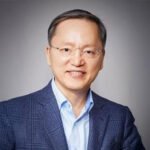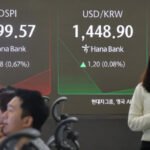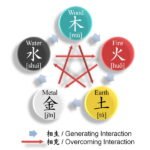Choi Siyoung, Samsung Electronics’ foundry chief, gives a keynote speech at Samsung Foundry Forum 2024 in Seoul on July 9, 2024 (File photo by Samsung Electronics)
Samsung Electronics Co., the world’s top memory chipmaker, plans to use its cutting-edge 4-nanometer (nm) foundry process for the mass production of a next-generation high-bandwidth memory (HBM) model, a core chip in powering artificial intelligence devices, to take on larger rivals in the sector – SK Hynix Inc. and Taiwan Semiconductor Manufacturing Co. (TSMC).
Samsung is set to utilize the 4nm foundry process for the logic die of the sixth-generation HBM4 chips, industry sources said on Monday. A logic die, which sits at the base of the stack of dies, is a core component of an HBM chip controlling DRAMs.
Memory chipmakers have manufactured logic dies for the existing products such as the HBM3E, but the sixth-generation model needs to go through foundry processes as it is equipped with customized functions required by clients.
The 4 nm node is Samsung’s signature chip foundry manufacturing process with a yield of more than 70%. The company uses the process for the Exynos 2400 chipset, the brain of its flagship AI smartphone Galaxy S24 series.
“The 4 nm process is much costlier than the 7 nm and 8 nm but it is significantly better than them in terms of chip performance and power consumption,” said an industry source. “Samsung, which manufactures the HBM3E with 10 nm process, aims to take the throne in the HBM sector by applying the 4nm process.”
The Suwon, South Korea-based tech giant had been expected to use 7 m or 8 nm foundry process for the production of the HBM4 logic dies. Samsung has been operating the 7 nm process since 2019.
FIGHT AGAINST SK HYNIX, TSMC ALLIANCE
With the 4 nm process, Samsung aims to deal with SK Hynix and TSMC, which teamed up to strengthen their positions in the fast-growing AI chip market.
SK Hynix, the world’s top HBM supplier, joined hands with TSMC, the global foundry leader, for the HBM4 in April as the South Korean company focuses on the memory chip business. SK Hynix is the only supplier of the fourth-generation HBM3 chip to Nvidia, which controls over 80% of the market for graphics processing units, the core of AI computing tasks.
SK Hynix’s HBM3E DRAM chip (File photo by SK Hynix)
Samsung decided to deal with the partnership of the two Nvidia’s major suppliers through its capabilities of designing and manufacturing foundry and HBM chips based on cooperation between its memory business and foundry division.
The 4 nm process, which has been applied since last year, requires sophisticated technology and double the resources of older processes. But it can manufacture high-performance and low-power chips.
Samsung aims to develop an HBM4 chip equipped with a high-performance logic die and beat competitors.
GROWING DEMAND FOR HIGH-PERFORMANCE, LOW-POWER CHIPS
Customers such as Nvidia and Advanced Micro Devices Inc. (AMD) have asked suppliers to develop HBM chips, which can quickly process large data with low power.
That came as AI accelerators, a high-performance parallel computation machine that is specifically designed for the efficient processing of AI workloads like neural networks, consume much electricity.
Samsung expects the 4 nm foundry process to produce such HBM chips and prevail in the industry.
The company plans to seek optimization from the design stage of a logic die for maximizing the performance of HBM4 chips with its system LSI division, a fabless organization.
HBM DRAM chip packaging structure (File photo by AMD)
“Unlike TSMC and SK Hynix, it is our unique strength for chip designers to participate in HBM4 production,” a Samsung executive.
The tech behemoth reportedly deployed staff of the system LSI division to the HBM development team recently established, according to industry sources.
SK Hynix and TSMC took measures to cope with Samsung’s plan. The two companies decided to add the 5 nm process to manufacture HBM4 logic dies in addition to the originally planned 12 nm process.
They also increased talents to improve the performance of the HBM4 with SK Hynix hiring experienced engineers on logic designs.
By Jeong-Soo Hwang, Chae-Yeon Kim and Eui-Myung Park
hjs@hankyung.com
Jongwoo Cheon edited his article.















